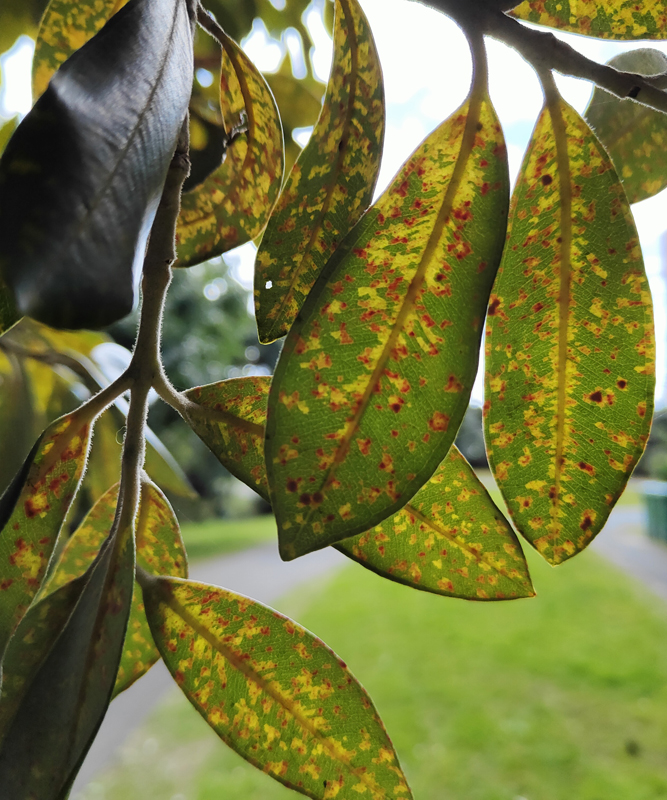This is the time for planting. I’ve never been so busy as last week in the vegetable garden – even got to catch up with some serious pruning back-log.
Gardeners can be very useful creatures that support our native and endangered trees, shrubs and climbers. Some of our endemic taonga are literally on the brink of extinction and planting these botanical specimens in appropriate places is like putting your eggs in many baskets.
1) Metrosideros bartlettii is also known as the Bartlett’s Rata; it occurs naturally in the far north of our country. Being a “rata” means it is closely related to pohutukawa and other species of Rata. But this one is pretty unique: its bark is grey-white and feels (and sheds) like tissue paper. The flowers are not red, but white and look just like Pohutukawa or rata in shape
Rare?
Oh yes: just 13 adult trees are left in our country; of the five “genotypes”, just one has been propagated from. Some trees are on private land – not sure about their future safety.
Browsing animal pests (think possums, deer, goats etc) are the main cause of decline. And now we have myrtle rust as well!

Myrtle Rust on Metrosideros. Photo / Supplied
2) Tecomanthe speciosa – the Three Kings Vine – is an absolute stunner of a liane. It is readily available in garden centres and can grow in a wide range of climatological conditions.
As a climber it needs good support from other trees – it also needs lots of space, moisture in the soil, and it prefers to have the roots in the shade.
The plant starts to bloom after 2 or 3 years growing up (patience!) – but will reward you with large, creamy-white tubular flowers in clusters, attracting native birds. Tecomanthe can be grown from seeds or cuttings; it’s frost tender, so plant it in areas that are subtropical.
Rare?
It’s the rarest plant in the world: One vine was discovered on Great Island (Three Kings Group, NW of Cape Reinga) in 1945; Feral Goats (who else?) were the cause of this plant’s decline. That original plant is still there – but struggling, since the eradication of goats have caused huge forest growth, shading that particular specimen.
3) Ngutukākā (also known as Kākābeak). Clianthus maximus and Clianthus puniceus are two species that originally occurred in Northland and the Auckland Region, especially Hauraki Gulf.
Its history in European times involves Captain Cook’s 1769 Nature Nerds Joseph Banks and Daniel Solander, who “discovered” the plant at Uawa (Tolaga Bay) in Tairāwhiti. The brilliant red flowers were visible from the ship and common on hill sides.
That likely indicates that Maori were keen on Ngutukākā (trading them?) and planted them in many places.
Browsing animals cause havoc (deer, goats – who else? – stock, pigs, hares) but also introduced garden snails and native kowhai moth caterpillars.
On my last trip to Tairāwhiti it was wonderful to see ngutukākā everywhere, especially near schools.
Thank you Graeme Atkins!! This is the modern mahi following on from the Maori History.
As relatives of kowhai (pea Family) these plants can fix Nitrogen from the air and therefore can grow in nutrient-poor soils. They like to grow in light-spots (where trees have fallen over and caused an opening in the canopy) or slip faces.
Seed is viable for a long time. The red flowers are a beacon for tui and bellbird and other nectar feeders.
Take your Radio, Podcasts and Music with you










